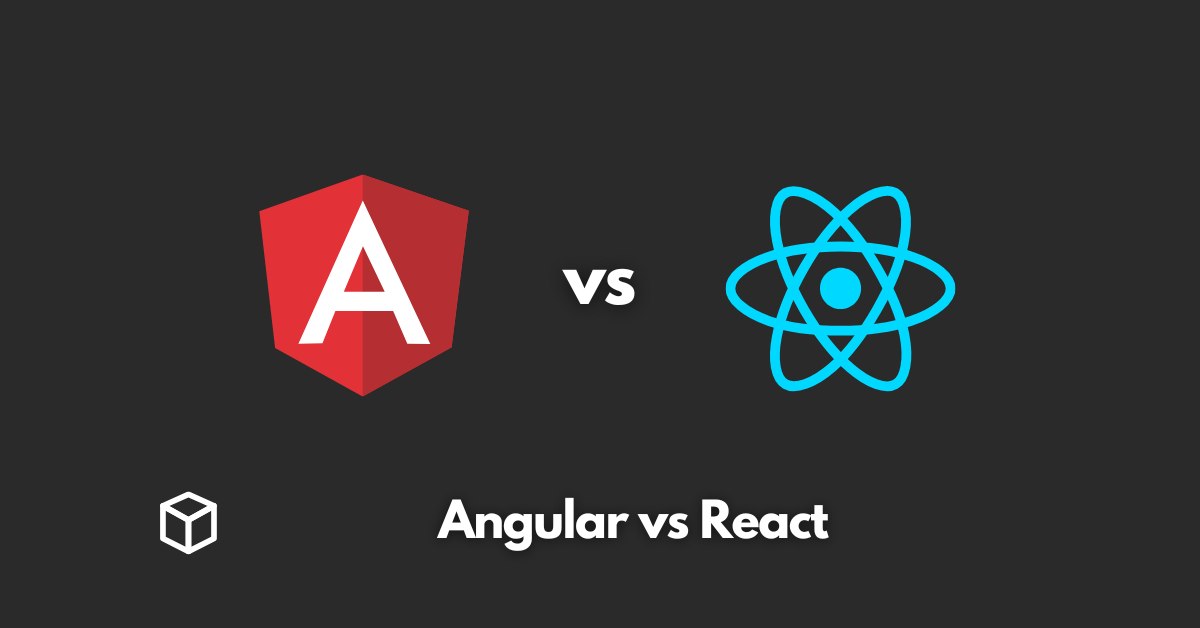As a web developer, you have a plethora of JavaScript frameworks to choose from when building your next web application.
Two of the most popular and widely used frameworks are Angular and React.
In this article, we will take a detailed look at both Angular and React, comparing their features, performance, ease of use, and scalability.
We will also discuss the use cases for each framework and provide a recommendation for which framework to choose based on the specific needs of your project.
Angular
Angular, also known as AngularJS, is a JavaScript framework developed and maintained by Google.
It is a complete solution for building web applications, providing everything from a powerful template language to a component-based architecture.
Some of the key features of Angular include:
- Two-way data binding: Angular’s two-way data binding allows for real-time updates to the view as the data model changes, and vice versa. This can greatly simplify the development process and improve the user experience.
- Dependency injection: Angular’s dependency injection system allows developers to easily manage and organize the dependencies of their application.
- Powerful template language: Angular’s template language provides a rich set of directives, filters, and expressions that can be used to create dynamic and interactive views.
One of the main advantages of Angular is its ability to organize and maintain large-scale applications.
The component-based architecture of Angular allows developers to easily break down their application into smaller, reusable components that can be easily managed and tested.
React
React is a JavaScript library for building user interfaces, developed and maintained by Facebook.
Unlike Angular, React is not a complete solution for building web applications, but rather focuses on the view layer.
Some of the key features of React include:
- Virtual DOM: React’s virtual DOM allows for efficient updates to the view as the data model changes, improving the performance of the application.
- JSX: React uses JSX, a syntax extension for JavaScript, to create reusable components that can be rendered on the page.
- Modular design: React’s modular design makes it easy to integrate with other libraries and tools, such as Redux for state management.
React’s focus on the view layer makes it well-suited for small, fast-paced projects.
The ability to easily integrate with other libraries and tools also makes React a popular choice among developers.
Comparison
When comparing Angular and React, it’s important to consider the specific needs of your project.
Angular, with its complete solution for building web applications, is well-suited for large, complex projects.
On the other hand, React’s focus on the view layer and ability to easily integrate with other libraries and tools make it a better choice for small, fast-paced projects.
In terms of performance, both Angular and React have their advantages.
Angular’s two-way data binding can simplify the development process, but it can also lead to slow performance in large-scale applications.
React’s virtual DOM, on the other hand, allows for efficient updates to the view, improving the performance of the application.
In terms of ease of use, React has a steeper learning curve than Angular.
React’s modular design and JSX syntax can be difficult for developers new to the library to understand.
Angular, on the other hand, has a more traditional MVC architecture and a simpler template language, making it easier to learn and use.
Use Cases
As mentioned earlier, Angular is well-suited for large, complex applications, while React is better for small, fast-paced projects.
Angular’s component-based architecture and powerful template language make it a great choice for building enterprise-level applications, such as e-commerce platforms, social media applications, and financial systems.
React’s modular design and focus on the view layer make it a great choice for building small to medium-sized applications, such as single-page apps, marketing websites, and dashboards.
Conclusion
In conclusion, both Angular and React are powerful and widely-used JavaScript frameworks for building web applications.
The choice between the two will ultimately depend on the specific needs of your project. Angular is well-suited for large, complex applications, while React is better for small, fast-paced projects.
Developers should also consider the performance, ease of use, and scalability of each framework before making a decision.
It’s also important to note that both Angular and React are constantly evolving, with new updates and features being released regularly.
As a developer, it’s crucial to stay up-to-date with the latest trends and updates for each framework to ensure that your web application is built with the best tools and technologies available.
In the end, it’s always best to weigh the pros and cons and evaluate which framework will best fit your project requirements, timeline and budget.
Both Angular and React have their own strengths and weaknesses, and choosing the right one will depend on the specific needs of your project.




